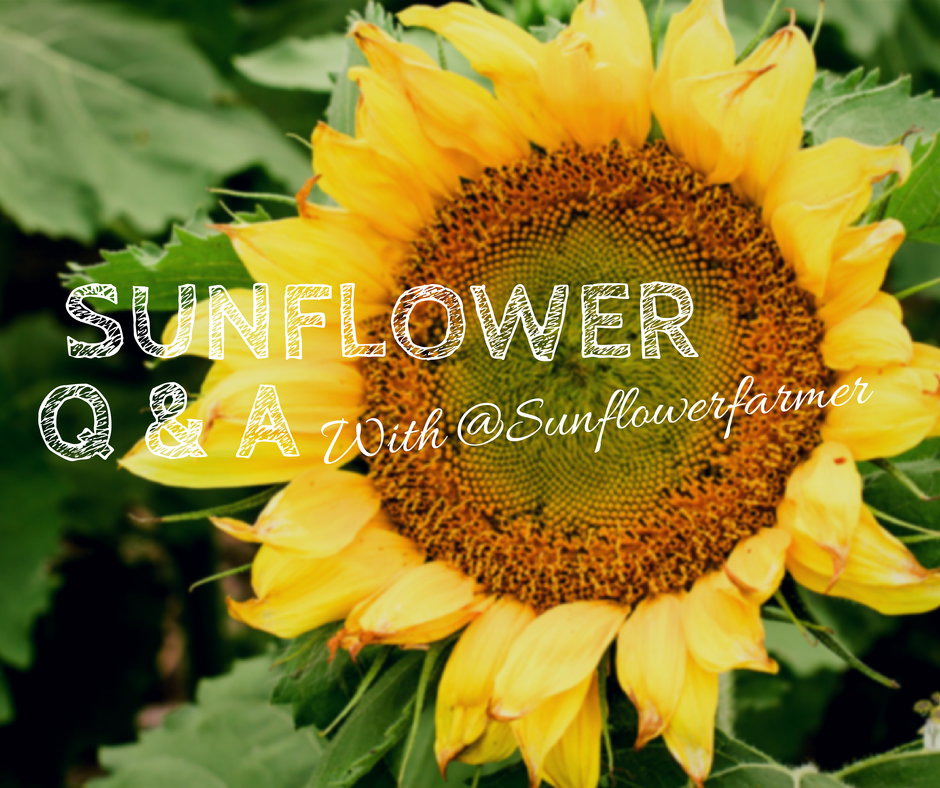
Thank you all, again, for the questions! You asked some GREAT questions about sunflowers! My husband and I enjoy the opportunity to share with you one of our favorite crops we grow on the farm! We hope that through this Q&A you will have learned something new about sunflowers and how they grow!
How do sunflowers pollinate?
Sunflowers require a pollinator (bees) to move pollen from one flower to another. Unlike corn and other crops, very little pollination is accomplished by wind. Sunflower pollen is heavy and stick and most of it ends up on the leaves of the plant during windy days.
Flowers pollinate from the outside in and the seeds underneath will turn from white to black once pollinated. If the plant is under any stress, often times, the flowers won’t fully pollinate.
We contract bees to be brought up from Texas to help our sunflowers pollinate. Since it gets much to cold for the bees here, they winter in Texas. Other growers may contract bees from places like California and other warmer climates.
Do sunflower heads follow the sun?
When plant parts (whether it be leaves or buds) follow the direction of the sun, it is called heliotropism. It is a common misconception that sunflower blooms follow the sun. When the sunflowers are small buds (not bloomed), they will follow the sun. Once the flowers bloom, the heads are usually too heavy to move so they will face east all the time. The National Sunflower Association states that facing east is likely a defense mechanism as facing south or west could result in the sun scalding the seeds during very hot days.
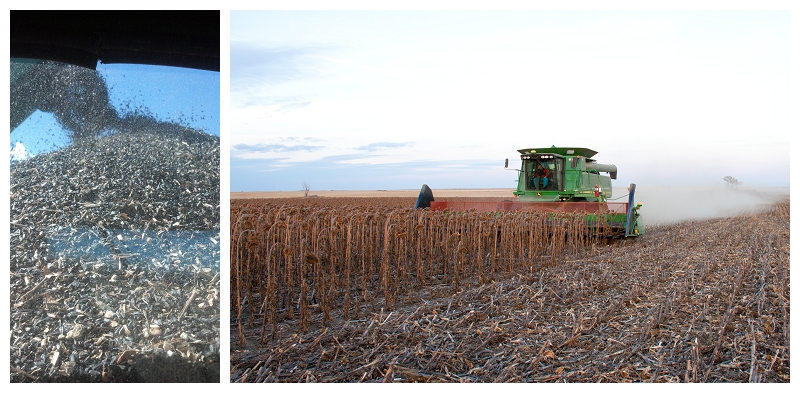 How do you harvest sunflowers?
How do you harvest sunflowers?
Surprisingly, this is probably the most common question we get about sunflowers. We harvest sunflowers with a combine (harvester) that has a pan head or all crop/specialty sunflower head attached to it. Sunflowers are physiologically mature when the back of the flower head is yellow and are ready to harvest when the head turns brown. Ideal seed moisture for harvest is around 10% or less.
Sunflowers are an oil-based crop and fine fibers (dust) from sunflower seeds pose a constant fire hazard during harvest. Fires during sunflower harvest can be extremely common, especially during dry years with low humidity. During harvest, we have to take steps to ensure that the combine is free of dust by blowing it off daily (sometimes more than 1x a day) as well as keeping a water tank in the field in case of a fire. SDSU has actually researched and developed a cover for certain parts of the combine to help deter harvest fires from starting.
What are the seeds you grow used for?
The seeds we grow can go to two different uses that depends on the year and market. First, the seeds can go towards birdseed or they can be crushed for oil. In both instances, we contract transportation for our seeds so they are picked up from our farm and usually travel east towards Fargo. If our sunflower seeds are for oil, they will end up at ADM in Enderlin outside Fargo to be crushed.
In part 1 of this series, I mentioned we grow NuSun varieties on our farm. NuSun is a specific type of oil known as a mid-oleic oil. NuSun oil is most notably used in Frito-Lay’s Sun Chips. NuSun oil is lower in saturated fat than other sunflower oils and it doesn’t need hydrogenation eliminates trans fat. Besides NuSun oil, there are two other types of sunflower oil available: linoleic and high oleic. All sunflower oils are touted for their light taste, frying performance, and health benefits compared to other oils.
Sunflower oil can be found in a variety of products from food to beauty products. In the food industry, often times sunflower oil is used as a frying oil. In cosmetic applications, sunflower oil is used as an emollient or moisturizer. One of my favorite lip balms, Burts Bees, contains sunflower oil.
Did you learn anything? I sure hope so! Have any more questions? Feel free to ask!
If you are interested in purchasing any of these sunflower photos, please visit my Photography page!

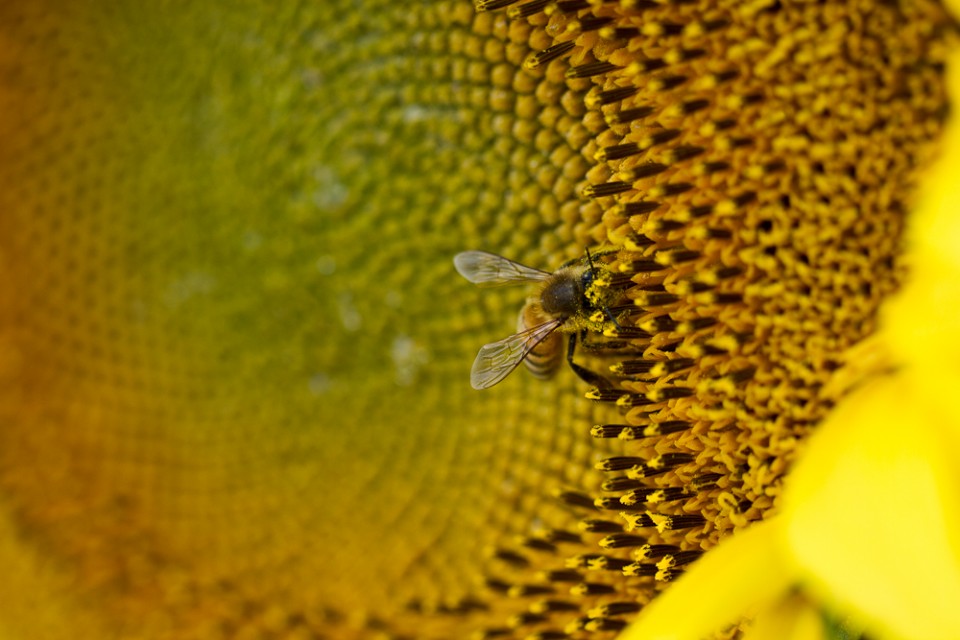
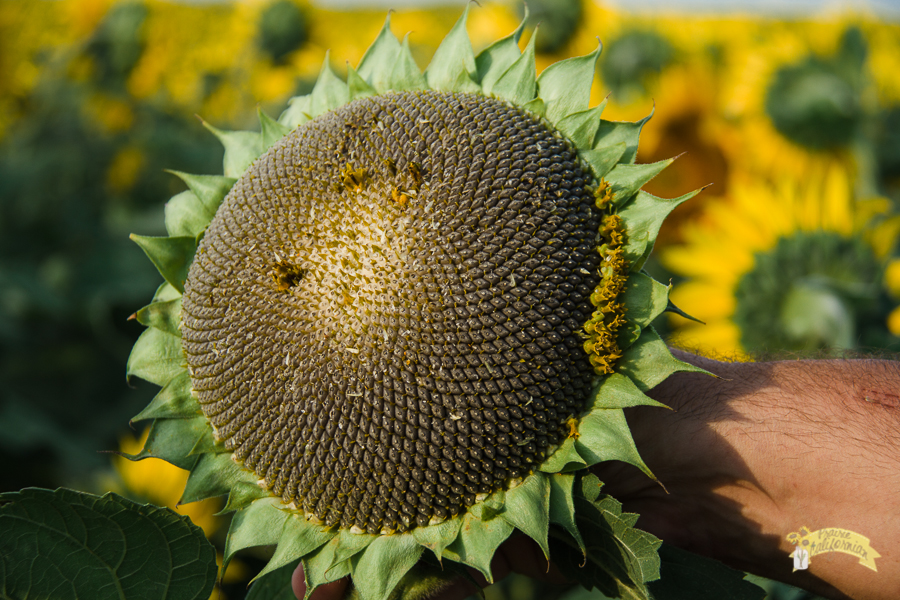
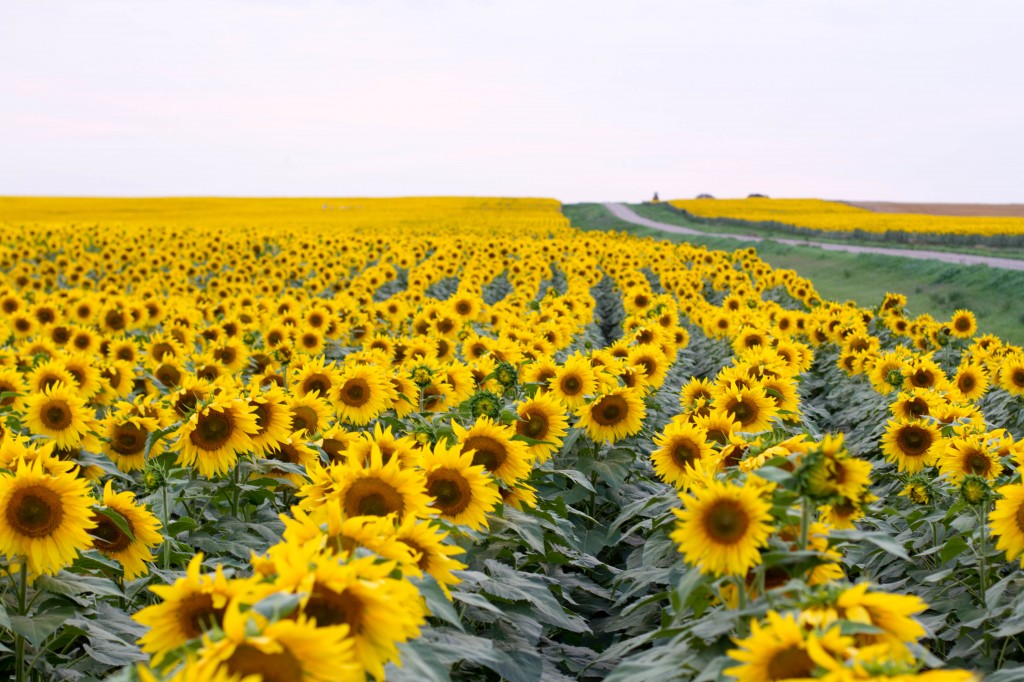
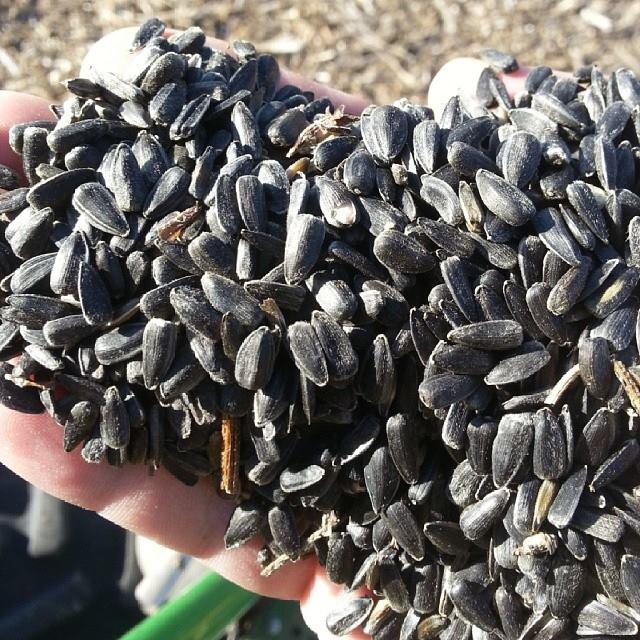

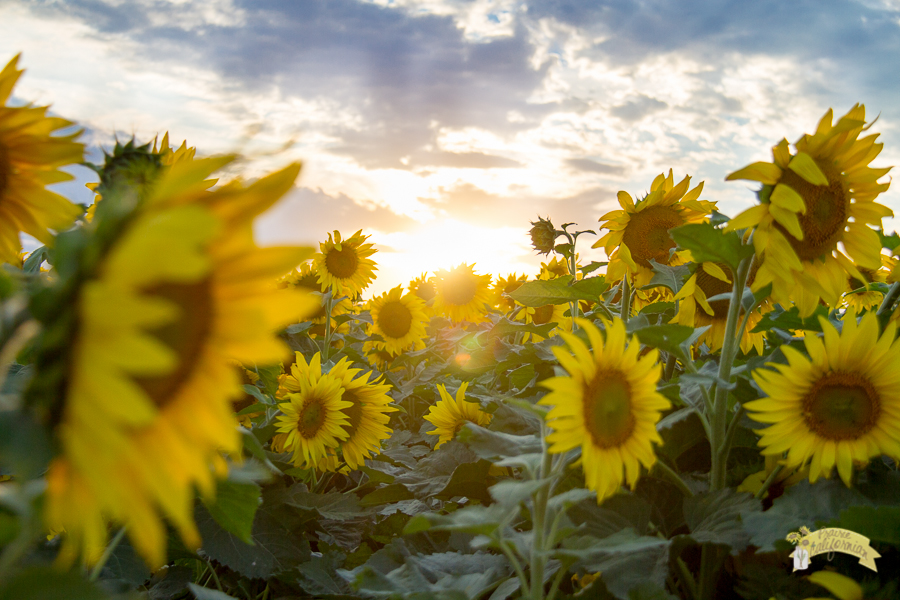
So interesting! I always wondered how sunflowers were harvested, and I never realized they all faced east. I love seeing all your beautiful pictures of the bright yellow sunflowers!
Author
Thank you! I am so glad to hear you learned something new!! I hope to do a post simply dedicated to sunflower harvest this harvest season!
Your pictures are beautiful! Thanks for info!